Research Fields
On this page you find relevant information about recent research topics of our group. The descriptions are linked to peer-reviewed scintific articles that have appeared in the hydrologcal and hydro-meteorological literature.
Research topics
- Climate impact research in the context of water resources
- Analysis of uncertainty in climate prediction
- Process and data-based hydrological modeling of medium and large-sized river basins
- Risk assessment in the context of hydro-meteorological extreme situations
- Interfacing weather forecasts with hydrological models for high and low flow prediction
- Bayesian analysis
Climate impact research in the context of water resources
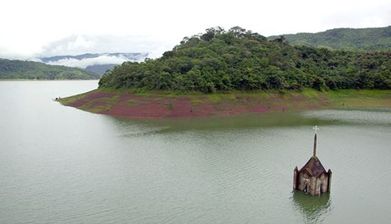 | The regional climate determines the availability of water. Processes in the atmospheric boundary layer, in conjunction with solar radiation, control the exchange of water and heat between soil and atmosphere. Regional precipitation and evaporation, both linked to weather patterns, control the humidity of the soils. Climatic changes can tilt this balance toward drier or wetter regional averages. This affects the regional water balance. We can observe such transformation through rising or falling groundwater table positions and year-to-year fluctuations of surface levels in artificial reservoirs. In our research group, we are quantitatively studying these issues, which are of importance for our future water supplies. Further reading: Reggiani, P., A. Talbi and E. Todini (2022). Towards informed Water Resources Planning, Hydrology, 9(136), DOI: 10.3390/hydrology9080136. Article |
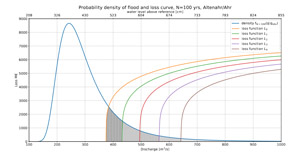 | The figure on the left shows the loss curves due to100-year flood for different heights of a protective structure. The skewed probability distribution is the 100-year maxima extreme value distribution derived for Altenarhr/Ahr in Germany. The grey shadowed areas are the expected damages resulting from the 100-year maxima flood. It turns out that the assumed risks using the full 100-year maxima extreme value distribution are considerably higher than those obtained using the conventional flood frequency curves for an 1/100 year event expected flood value derived using the 1-year maxima extreme value distribution. Further reading: Todini, E. and P. Reggiani (2024). Towards a new paradigm in flood risk assessment: from single-valued exceedance probability to expected maximum damages. Water Resources Research, 60(1), e2023WR034477, DOI:10.1029/2023WR034477. Article |
Analysis of uncertainty in climate projections
 | Our group is among the leaders in post-processing of climatic projections from the CMIP5 climate model experiment. We use Bayesian paradigms to determine the uncertainty of climate projections for temperature, precipitation, and evapotranspiration across a wide range of geographical areas. This knowledge is indispensable for estimating climate impacts and risks on agricultural productivity, expected high and low -flow regimes and water resource availability. Similar methods are also applicable for estimating renewable energy production (hydro, wind) under climate change conditions. Further reading: Reggiani, P., E. Todini, O. Boyko and R. Buizza (2021). Assessing uncertainty for decision-making in climate adaptation and risk mitigation. International Journal of Climatology, 1-22. DOI:10.1002/joc.6996 Article |
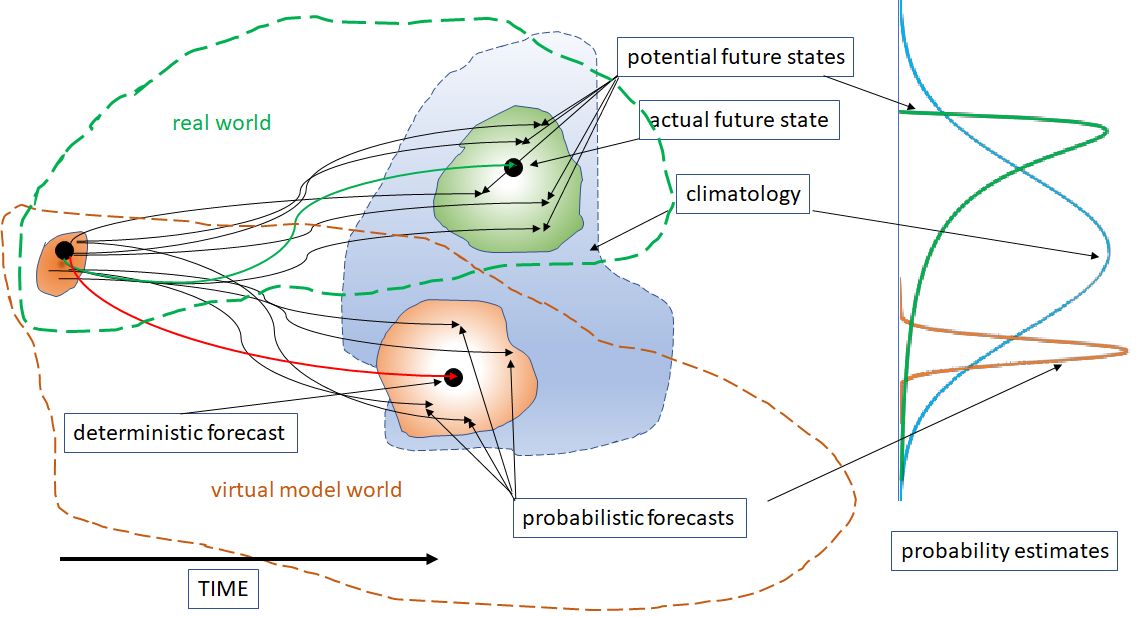 | The uncertainty in climate prediction originates from the limitation of Earth-system models, which describe the physical processes in the atmosphere, over land and in the oceans only approximately and in a very coarse way. Nevertheless, they represent the best available tools and methods to project the complex non-linear climate processes into the future. This involves making assumptions about emission scenarios, the so-called Representative CO2 Concentration Pathways (RCPs). In order to enable us to make statements about the future climate, the models must be driven over a historical control period for which observations are available. The relative model performance is determined through appropriate statistics. Based on these comparisons, the models can be weighted accordingly for future periods. Further reading: Boyko, O., P. Reggiani and E. Todini (2022). Post-processing climate projections of precipitation for the River Po valley: will Italy´s North become water constrained? Hydrology Research, 53(11), 1414–1427, DOI: 10.2166/nh.2022.063. Article |
Process and data-based hydrological modeling of medium and large-sized river basins
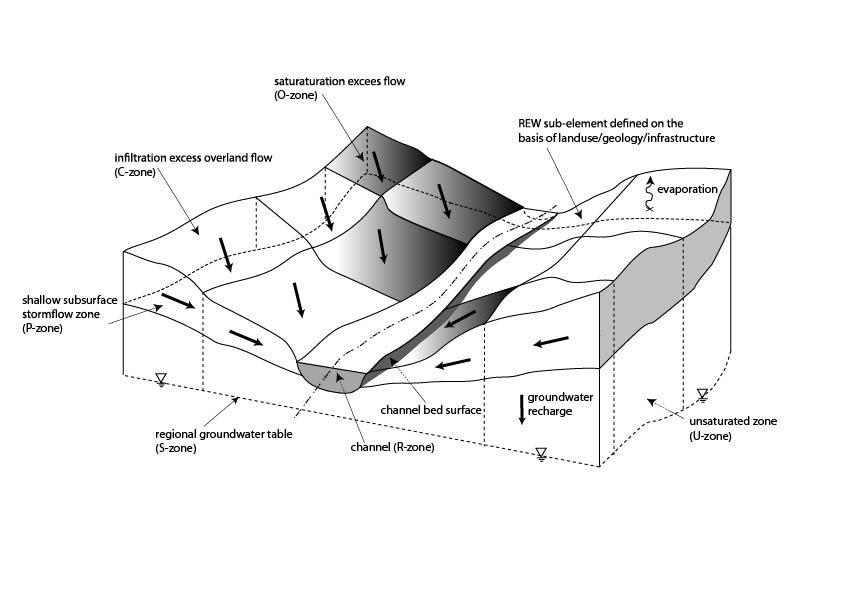 | To determine regional water balances and estimate high or low water volumes, we need mathematical models that simulate surface runoff as well as groundwater recharge and channel flow. These models describe elementary hydrological processes of the water cycle using differential equations that are solved by computers. Further reading: Moya, H., I. Althoff, J. Celis-Diaz C. Huenchuleo and P. Reggiani (2024). Impact of future climate scenarios and bias correction methods on the Achibueno River basin. Water, 16, DOI:10.3390/w16081138. Article |
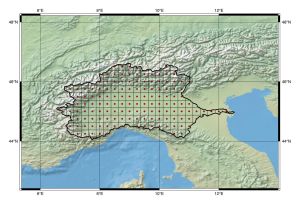 | Hydrological modelling for operational purposes, like real-time flood forecasting, requires continuous updating of the internal states of the hydrological model. The updating is carried out as soon as new information becomes available through observing networks or remote sensing. This information needs to be used in real time to adjust the model and put it back on track. If such updating would not occur, the model would get off track over time and deliver suboptimal results. Model errors need to be minimized in in real-time forecasting operations. The adjustment of model states for error correction is called data assimilation and is common in meteorology and weather prediction. In our group we perform assimilation of snow and soil moisture data into hydrological forecasting models for the Federal Office for Hydrology in the frame of the H-SAF project sponsored by Eumetsat |
Risk assessment in the context of hydro-meteorological extreme situations
 | Hydro-meteorological extreme events are due to weather phenomena, which comparatively to the past, occur rarely. They are characterized by exceptionally high temperatures or intense precipitation, in conjunction with fast air currents. Often these events appear suddenly and cause large damages to different economic sectors and loss of human life. Damages can be caused either by water flows that exceed the carrying capacity of rivers or drought, that leads to crop losses, economic interruptions and water scarcity. Further reading: Reggiani, P. and O. Boyko (2019). A Bayesian processor of uncertainty for precipitation forecasting using multiple predictors and censoring, Monthly Weather Review, 147(12) DOI:10.1175/MWR-D19-0066.1. Article |
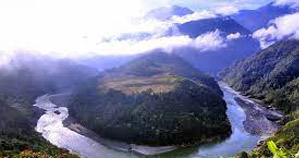  | In a series of projects we are pursuing cutting-edge research on hydrological variability in High Mountain Asia, in particular the Upper Indus and the Upper Brahmaputra (Yarlung Tsangpo) basins. These regions belong to the so-called third pole and are susceptible to climatic change. Variability in water resources could potentially affect millions of people depending on it for irrigation. Further Reading: Reggiani, P. and O. Boyko (2024). A retrospective hydrologic uncertainty analysis using precipitation estimation ensembles for a poorly gauged basin in High Mountain Asia, Journal of Hydrometeorology, DOI: 10.1175/JHM-D-23-0170.1. Article |
Interfacing hydrological models with weather forecasting for high- and low flow prediction
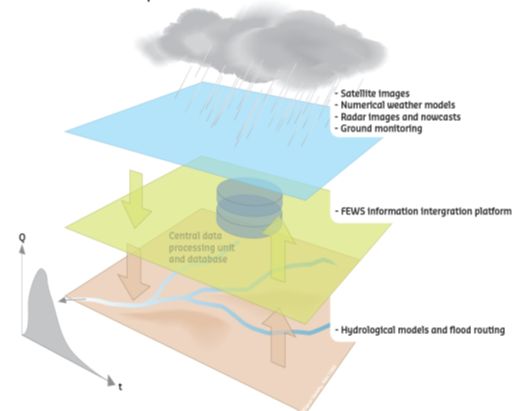 | For flood forecasting, weather model outputs must be linked to precipitation-runoff and hydrodynamic models for wave propagation analysis in the main rivers. Most modern early flood warning systems operate on this principle. With the help of flood early warning systems, it is possible to forecast the rise of a river water level and take appropriate protective measures. These include the erection of mobile flood barriers and, in extreme cases, the evacuation of the population from endangered areas. This has already occurred on the River Elbe in Germany in 2002 and 2013. Further reading: A. P. de Roo et al. Development of a European flood forecasting system. In: International Journal of River Basin Management 1.1 (2003), pp. 49–59. doi: 10.1080/15715124.2003. Article |
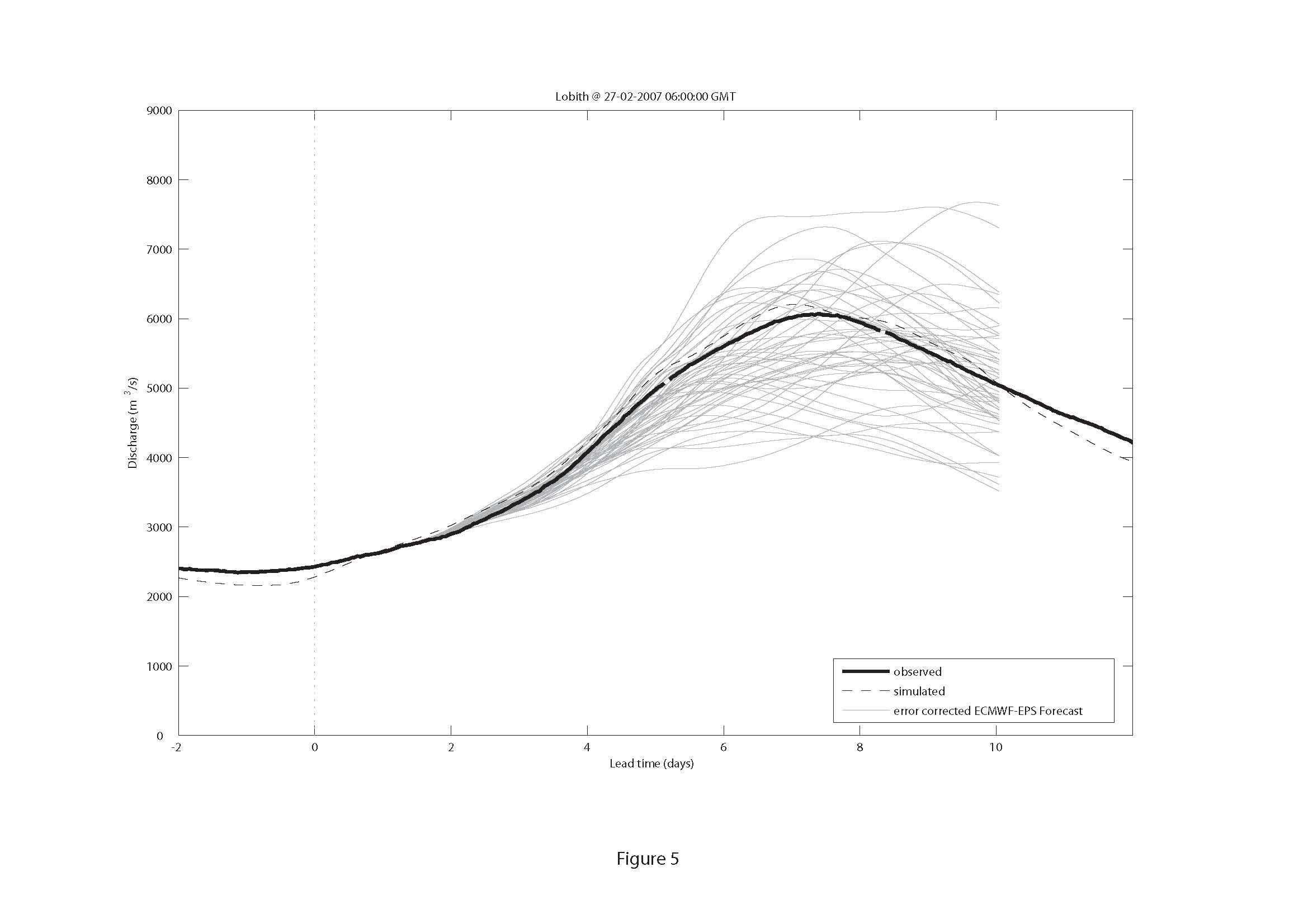 | Ensemble forecasting entials numerical predictions of weather through multiple scenarios, usually 16 to 51 so-called "members" from independent weather model runs that are supposed to represent the uncertainty of the chaotic weather event. This is comparable to repeated draws of a random quantity. Weather ensembles can be used to better capture uncertainty in flow forecasting through streamflow ensembles. This method is now routinely used in operational flow forecasting by forecasting agencies globally and are part of our research portfolio. Further reading: P. Reggiani, D. Biondi and E. Todini (2024). On time-horizons based post-processing of flow forecasts, Frontiers in Water, DOI: 10.3389/frwa.2024.1359750. Article |
Bayesian analysis
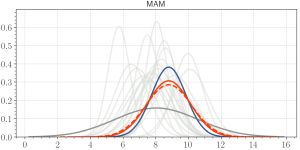 | Bayesian statistics is based on linking knowledge from the past with certain prior assumptions in order to be able to make inferences about as yet unknown states or events. This method is widely used in artificial intelligence. We routinely apply Bayesian statistics in flood forecasting to draw conclusions about the impending threat of an upcoming flood event based on the historical flood behavior of a river and our demonstrated modeling and forecasting capabilities. Further reading: Verkade, J.S., Brown, J. D., F. Davids, P. Reggiani and A. H. Weerts (2017). Estimating predictive hydrological uncertainty by dressing deterministic and ensemble forecasts; a comparison, with application to Meuse and Rhine, Journal of Hydrology, 555, 257-277, DOI:10.2016/j.jhydrol.2017.10.024. Article |

